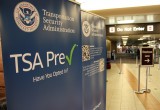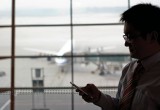Facial recognition boarding at Miami International Airport
12 March, 2019
category: Biometrics, Transit
A new facial recognition boarding process for international flights has come to Miami International Airport. The Lufthansa-backed effort marks the latest deployment of facial recognition technology for global travel — and comes at a time of increasing focus on that authentication method in other retail and payment environments as well.
The captured facial images are converted to biometric templates and checked against CBP databases for real-time matching and verification within a few seconds.
According to recent reports, the boarding process was unveiled for passengers of Lufthansa Flight 461. Along with Customs and Border Protection (CBP) and global air transport IT provider SITA, Lufthansa’s boarding gate uses a simple photograph to confirm passengers’ identities and their authorization to travel,” a report from RusTourismNews says. “The facial recognition verification process takes less than two seconds with a 99-percent matching rate, according to CBP. (The Miami airport) expects to launch biometric boarding with additional airlines this year.”
The facial recognition authentication service is available now only at the Miami airport’s gate J17, according to airport authorities. At least a dozen other airports also have similar facial recognition biometric boarding technology in place.
Facial recognition boarding process
The deployment in Miami comes after Lufthansa tested a similar program with I.T. provider Amadeus and CBP at the Los Angeles International Airport. The captured facial images are converted to biometric templates and checked against CBP databases for real-time matching and verification within a few seconds. The technology negates the need for passengers to show boarding passes and passports before boarding planes.
Passengers still must show ID to pass through general security gates. The Germany-based airline had previous said that a test of the facial recognition technology resulted in the boarding of some 350 passengers onto an A380 airplane in about 20 minutes.
Besides facial recognition deployments at airports — where the goal is to provide better, tighter security in a way that could also serve to make international air travel more efficient for both passengers and security personnel — the biometric authentication method is finding use in payments and retail, mostly via consumers’ mobile devices.




